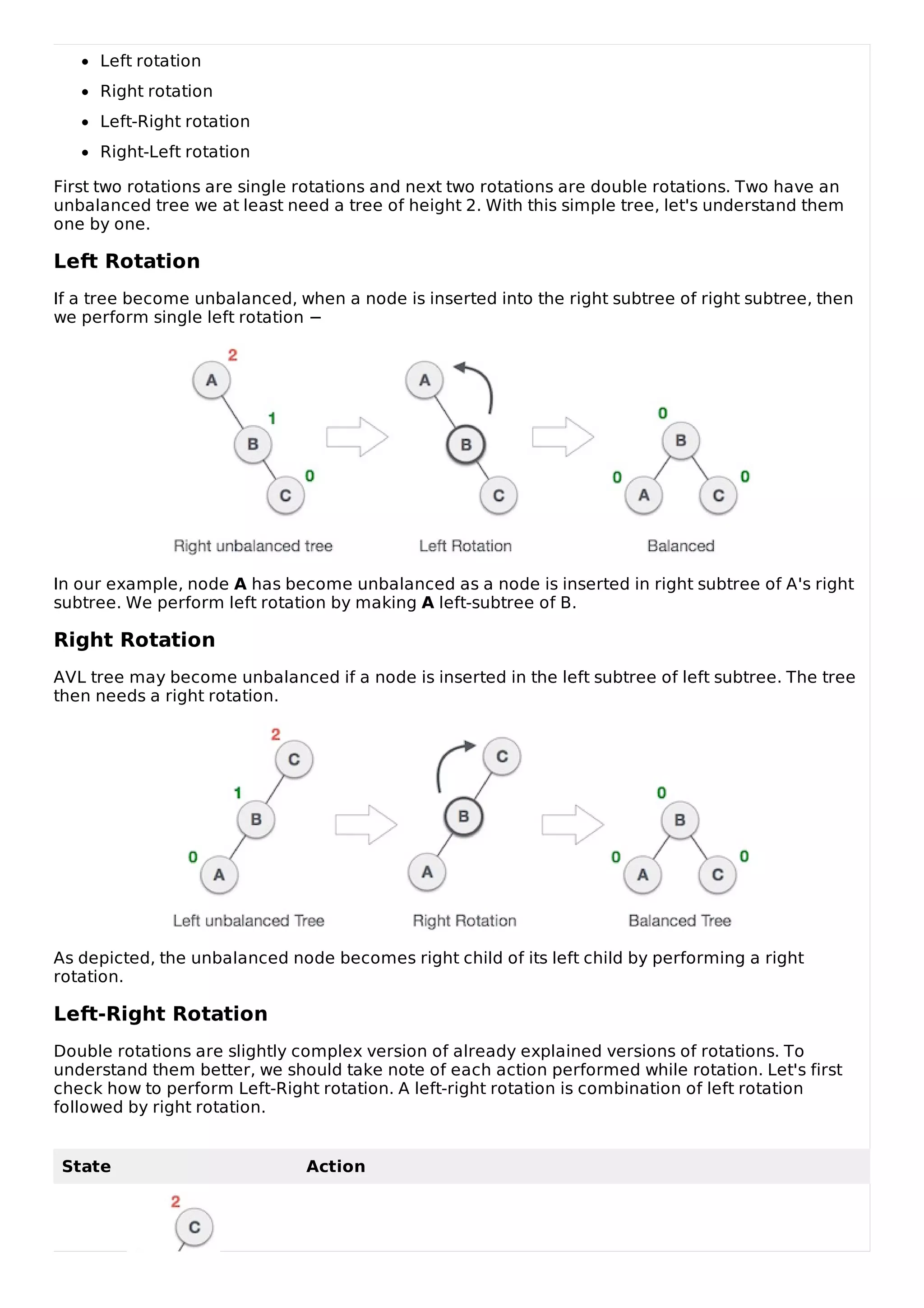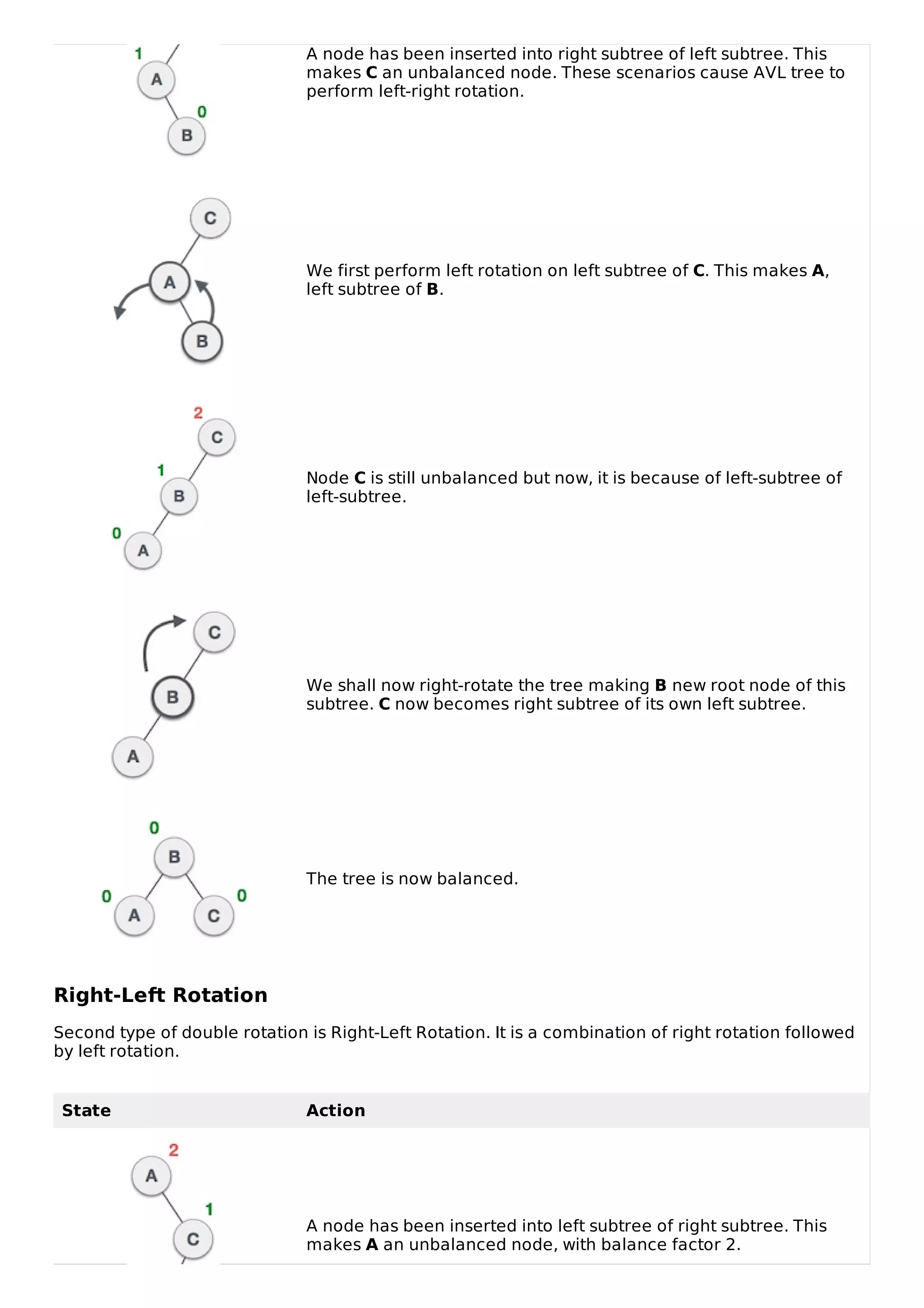AVL trees are self-balancing binary search trees that ensure the heights of the two child subtrees of every node differ by no more than one. This balancing prevents the tree from becoming too unbalanced and degrading to linear-time performance. The tree maintains balance via single or double rotations when nodes are inserted or removed. Single rotations include left and right rotations, while double rotations are left-right and right-left combinations of single rotations to rebalance the tree.



![First, we perform right rotation along C node, making C the right
subtree of its own left subtree B. Now, B becomes right subtree of
A.
Node A is still unbalanced because of right subtree of its right
subtree and requires a left rotation.
A left rotation is performed by making B the new root node of the
subtree. A becomes left subtree of its right subtree B.
The tree is now balanced.
Loading [MathJax]/jax/output/HTML-CSS/jax.js](https://image.slidesharecdn.com/avltreealgorithm-161223151823/75/Avl-tree-algorithm-4-2048.jpg)